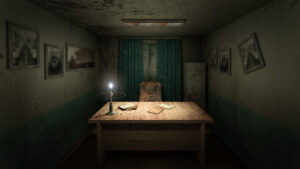
Escape Room Locks: Understanding Different Types and Mechanisms
Escape rooms have quickly captured the imagination of everyone looking for a unique adventure. They provide players with the chance to solve puzzles, untangle riddles,
Escape rooms are known for their challenging environments—puzzles to solve, locks to open, and challenges to overcome. Although most escape rooms come with various themes, their mechanics stay the same. Most venues rely on the puzzles for the spectacle of getting out in time.
But instead of using traditional locks, most escape rooms invest in other mechanisms that make the games more exciting and brand new. If you want to learn how to solve traditional locks in escape rooms, read on. We will be tackling how to escape in time by solving unconventional puzzles in escape rooms.
Puzzles that need a bit of logic in solving them are popular in escape rooms. They are fun to play and maximize the players’ ability to think on the spot for the solution. Although logic puzzles do not involve touching any object in the room, they require players to be quick on their feet.
Logic puzzles are a combination of locks and even codes. They appear in various forms, difficulty levels and might be simple at first while slowly progressing in difficulty. Players shouldn’t expect the same game pattern throughout the rest of the game. Instead, they should keep their minds open for possible puzzle combinations that may arise.
Math puzzles in escape rooms aren’t like the Math puzzles we used to have in school. Instead, they are designed for players old and young. You wouldn’t have to revisit your Algebra textbooks before coming into an escape room. But you might need a clear mind to help you solve Math puzzles quickly.
There will be straightforward puzzles, such as adding, subtracting, multiplying, or dividing some factors. However, there may also be instances where players would need to count something to get the code for the next room to open. But the trick here is to be calm. The solutions are simple but the nerves and time pressure will cloud your mind. However, focusing on the problem and how to solve it should get you to the next round.
Although there will be fewer locks and keys puzzles in unconventional escape rooms, there will be mechanical puzzles that will trick players’ minds. The puzzles add a layer of complexity to the escape as it’s more challenging to identify and consider them as puzzles part of the game.
For example, if a brief requires you to move statues, use mirrors to deflect lasers, or turn dials into specific combinations, then it’s likely that you’re solving a mechanical puzzle. They involve a bit of logic since completing them will lead you to the next level.
Escape rooms are all about using the room to advance to the next round. Therefore, it’s typical for these games to incorporate lights and sound puzzles in surprising ways. Although it’s unusual, some escape rooms take the games to the next level by using lights and sounds as cues and clues.
They can be used as morse code, signifying an answer that gets players through. The key is to be observant. Keep in mind that everything in an escape room is connected to each other and can be used to solve the puzzles laid out.
Escape rooms test players, their abilities, and what they can do to win. Although a game usually lasts for only a few hours, every session will feel like forever when you’re trying to solve the puzzles. However, as long as you stay calm and focused, it will be over before you know it.
Premier Escape Adventures is East Bradenton’s Largest Escape Room Experience. If you were given 60 minutes to escape, can you make it out in time? Visit our website today to learn about how we comply with Covid-19 guidelines to ensure everyone’s safety.

Escape rooms have quickly captured the imagination of everyone looking for a unique adventure. They provide players with the chance to solve puzzles, untangle riddles,

Escape rooms have become a popular form of interactive entertainment, offering thrilling experiences that test your wits and problem-solving skills. Imagine stepping into a room

Escape rooms have captured the imagination of adventure seekers, offering puzzles, clues, and themes that transport players to different worlds. They aren’t just about solving